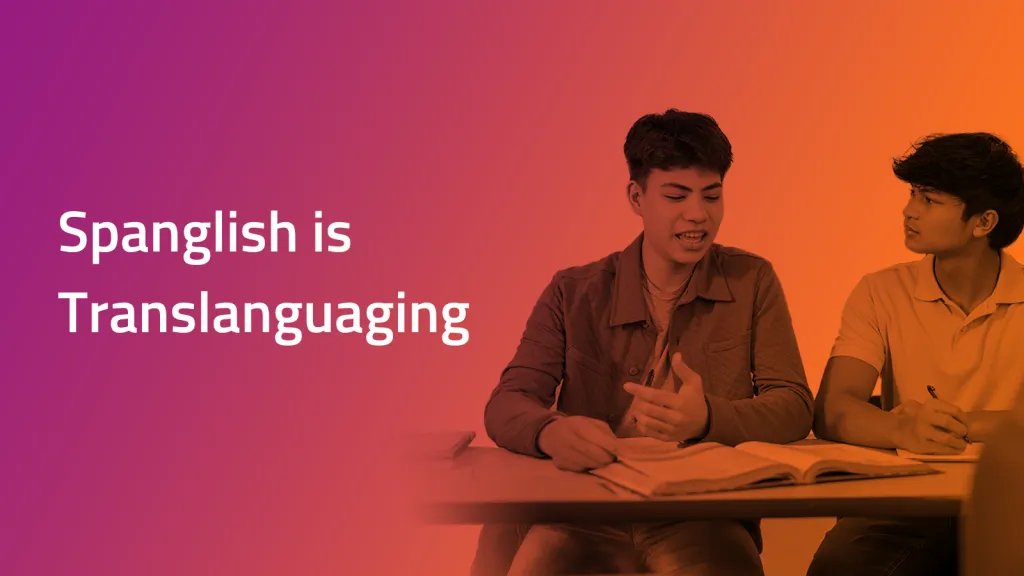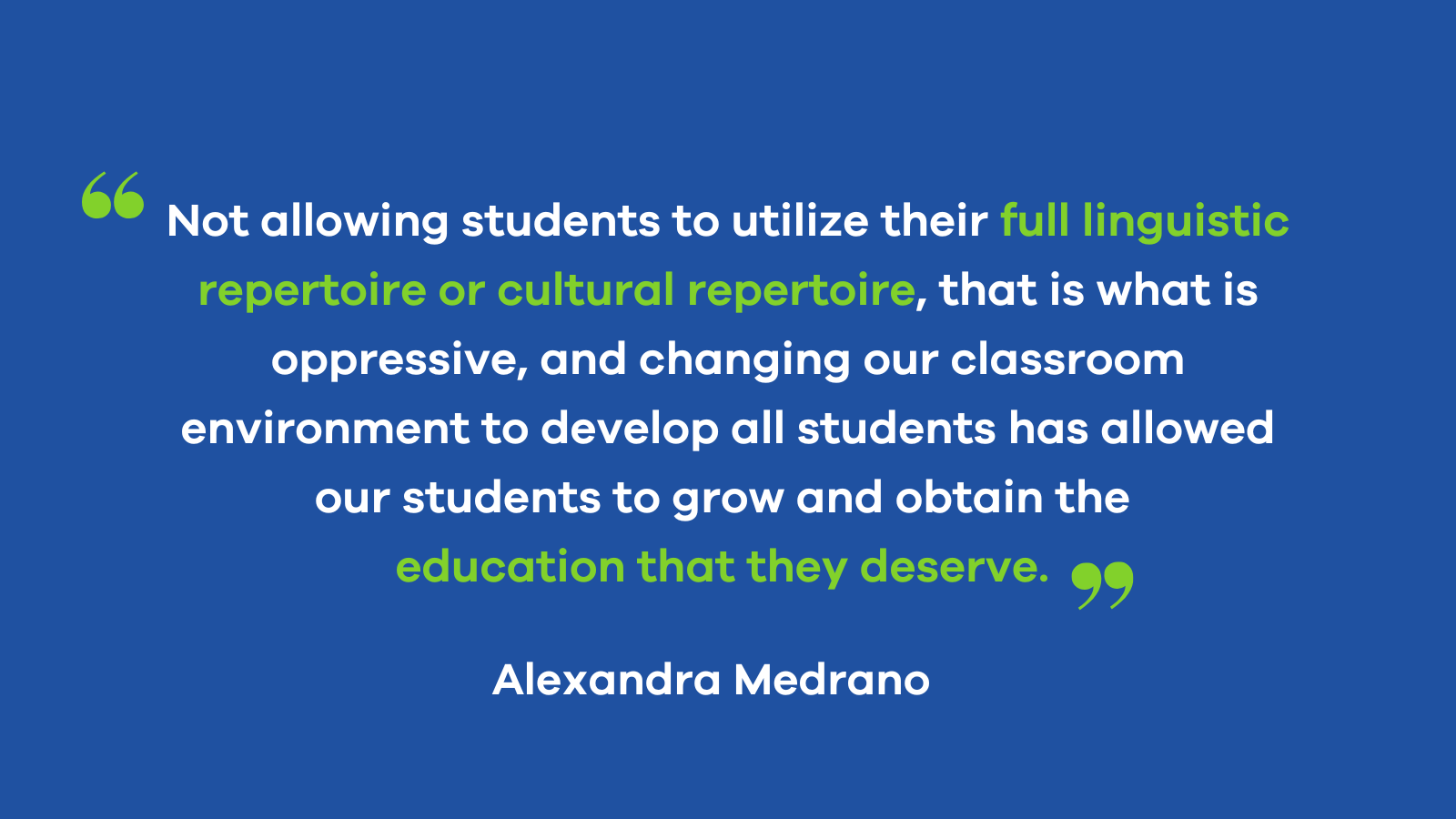Spanglish is Translanguaging


Spanglish is Translanguaging
Spanglish has historically been discouraged in both English and Spanish classrooms across the US. However, by discrediting this blended language we are not allowing students to use their entire linguistic repertoire - which Dr. José Medina has qualified as a form of oppression. Not only is Spanglish, which is the blending of word parts from both Spanish and English, a significant part of many heritage Spanish speaking students’ identities, it is a valuable form of translanguaging.
To explore this topic in depth, we spoke with Alexandra Medrano, a teacher in Colorado who shares her journey from discouraging to celebrating Spanglish in her classroom. She also highlights other strategies she uses to create a more supportive and welcoming learning environment.
As you’ll hear in the conversation, her beliefs about Spanglish were developed years before she became an educator.
Learning to embrace “Spanglish” as a form of translanguaging
“I was perpetuating things that occurred in my own educational experience.”
Alexandra Medrano is a heritage Spanish speaker. She grew up speaking Spanish at home and English at school. She was repeatedly told by her teachers (and even grandparents) that Spanglish words weren't correct. This negative reaction to blending the languages continued throughout her education and influenced how she responded to her own students as an educator.
“I just remember coming in very much like my high school Spanish teachers did, and my college professors did in terms of, "You only speak Spanish in the classroom." And I had that perspective that Spanglish or translanguaging was incorrect.”
Over the years, she saw the impact that discouraging this style of speaking had on her students, and found them shutting down or disengaging when told the way they spoke Spanish was wrong. Alexandra realized that she wanted to shift her approach to ensure that all of her students were validated, without feeling the need to suppress any part of their identity.
“I really wanted to focus on that identity [of Heritage Spanish speakers] and building on their multilingualism as an asset rather than tearing them down for it.”

How to support translanguaging in the classroom
Alexandra now advocates for actively supporting translanguaging as a form of social justice against an oppressive educational system.
“A lot of that was researching on my own first, what are the sorts of activities that you can do in class that build identities and build pride in being a multilingual student and allowing students to use both English and Spanish. I noticed boosted up engagement and that it made students more excited to be in my class.”
She shares several steps she has taken to encourage students to utilize their multilingual capital:
1. Investigate the history of Spanglish terms being used
Alexandra and her students now use primary sources to explore the history of these words together, which she notes is a great way to validate the use of Spanglish or informal language.
2. Communicate clear language objectives
For each lesson, Alexandra explicitly tells her students how they will access the content and/or demonstrate their mastery using one or more of the four language domains.
This is a concept we recently discussed with Dr. José Medina, and hearing how Alexandra does this in her classroom as an educator is a great example of connecting research to practice.
3. Utilize Co-teaching to Step Out of your Language Comfort Zone
Co-teaching was one of the initial ways her school rolled out their multilingual education program, and Alexandra explains that it was key in shifting mindsets for teachers that ELs should be integrated into the classroom rather than pulled out.
Co-teaching also allows for increased innovation and courage in the classroom. Having a partner teacher can help with running small groups, trying new techniques, and even having an additional person to pose clarifying questions during instruction.
4. Explore opportunities for learning
Alexandra shares that after several years in the classroom, she ultimately went back to school to study Educational Equity and Cultural Diversity. While this program has been a great experience for Alexandra, she emphasizes that there are many routes teachers can take to continue their learning on the topic of translanguaging and educational equity.
Educators can look into a masters program, webinars on the topic, professional development offered by their school or district, or seek out related reading and research - our white paper is a great place to start.
Download the full episode transcript here.
Episode Resources:
- Read her recommended essay titled How to tame a wild tongue
- Check out this resource on Culturally Sustaining Pedagogy
- Read Alexandra’s Chalkbeat article
- Follow Alexandra Medrano on LinkedIn and Twitter